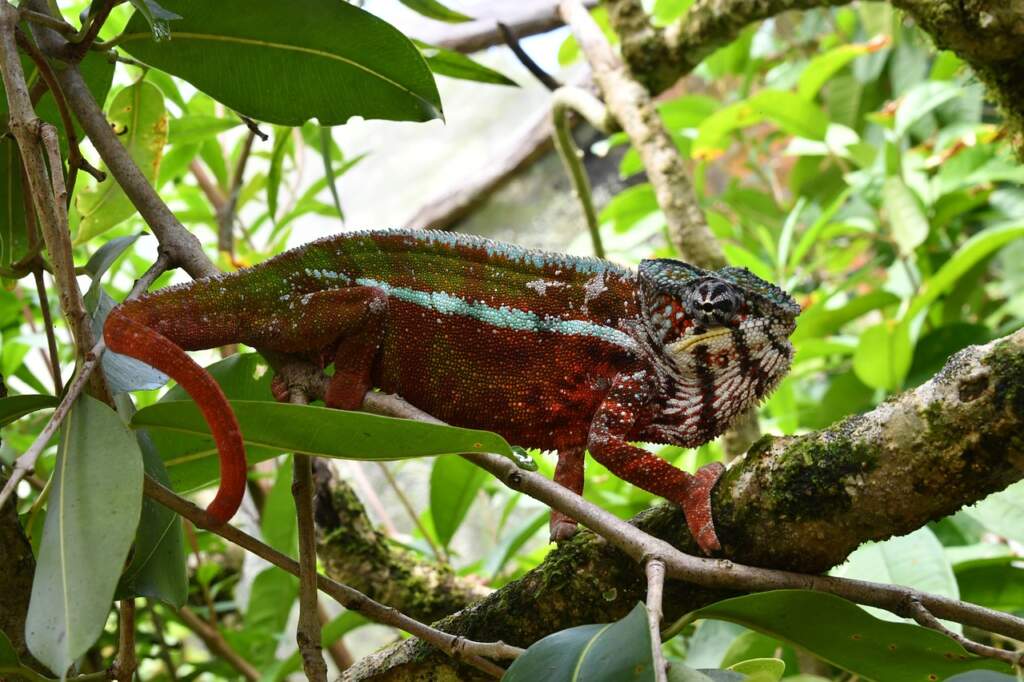
Madagascar, an island country in the Indian Ocean off the coast of Africa, is a botanical paradise.
This ecological wonderland, isolated from the mainland for over 88 million years, has evolved into a unique sanctuary for flora and fauna. Covering over 587,000 square kilometers, Madagascar’s varied landscapes range from rainforests and dry deciduous forests to spiny deserts and high mountain ranges. Such diverse habitats have given rise to an astonishing array of plant life, with over 80% of its species found nowhere else on Earth.
The isolation of Madagascar has played a pivotal role in shaping its flora. Separated from the African continent, the island became a crucible of evolution, where plants adapted to the unique environmental conditions without the influence of mainland species. This evolutionary process, known as insular biogeography, has led to a high rate of endemism. The absence of certain animal groups and the presence of unique pollinators like lemurs and other endemic fauna further influenced the evolution of Madagascar’s plant life, resulting in unusual shapes, sizes, and adaptations.
Madagascar’s flora is not just unique but also critically important. Many plants have developed extraordinary survival strategies to cope with the island’s distinct environments, from the water-storing capabilities of baobab trees to the spiny defenses of desert succulents. This botanical diversity is not only a window into evolutionary biology but also a critical resource for the Malagasy people, providing food, medicine, and materials.
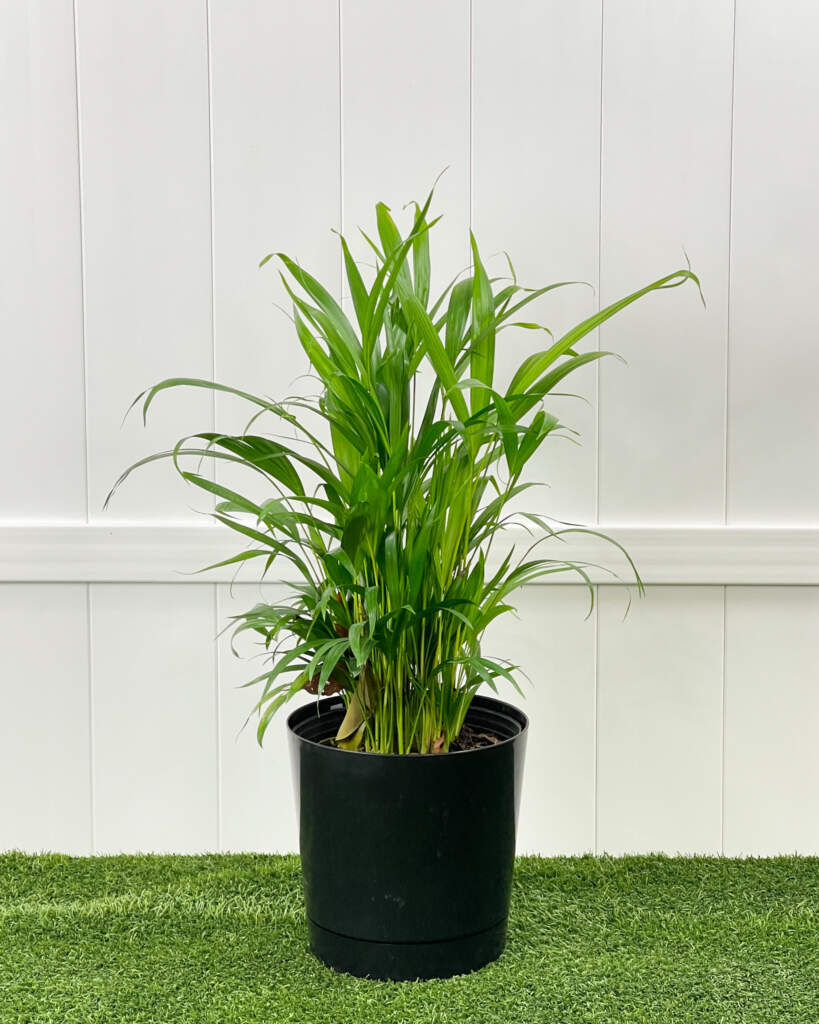
Areca Palm
Areca Palm (Dypsis lutescens)
The Areca Palm, scientifically known as Dypsis lutescens, is a captivating plant native to the lush, tropical rainforests of Madagascar. This palm, often found under the canopy of taller trees in its natural habitat, has adapted to thrive in the warm, humid conditions of the island. Historically, the Areca Palm’s journey from the dense forests of Madagascar to households and offices around the world is a testament to its aesthetic and ecological appeal.
This palm is characterized by its slender, golden-yellow stems and feathery, arching fronds that can reach up to 6 to 8 feet in height when grown indoors. In the wild, however, it can grow much taller. The Areca Palm’s elegant appearance has made it a popular choice for indoor and outdoor landscaping.
In Madagascar, the Areca Palm holds a significant place in the local ecosystem. It provides habitat for numerous species, contributing to the island’s rich biodiversity. Over the years, this palm has not only maintained its status as an ecological asset in its native land but has also become a symbol of tropical elegance and environmental consciousness in homes and offices worldwide.
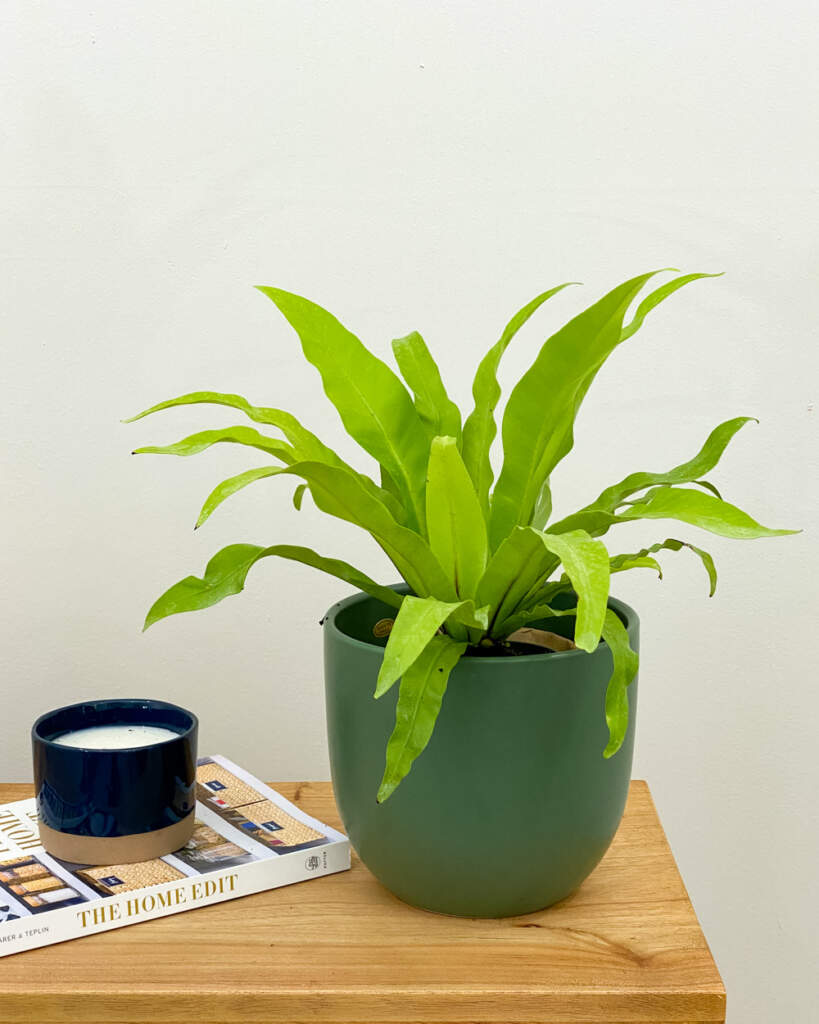
Asplenium nidus, Bird’s Nest Fern
Bird’s Nest Fern (Asplenium nidus)
The Bird’s Nest Fern, or Asplenium nidus, is a distinctive fern native to the majestic rainforests of Madagascar, a land renowned for its unique and diverse flora. This species, belonging to the Aspleniaceae family, is a striking epitome of the island’s lush greenery. It has carved a niche for itself both in the wild and in the hearts of plant enthusiasts worldwide.
In its natural habitat, the Bird’s Nest Fern typically grows on tree trunks and branches, embracing an epiphytic lifestyle. This growth pattern allows it to absorb moisture and nutrients from the air and rain, thriving in the humid, dappled sunlight of the rainforest canopy. The fern’s common name is derived from its rosette of large, simple, lance-shaped fronds that resemble a bird’s nest. This natural arrangement is not just visually appealing but also serves an ecological function, often catching and holding debris and rainwater.
Historically, the Bird’s Nest Fern has been more than just a component of Madagascar’s biodiversity. It holds significance in traditional Malagasy culture, particularly in medicinal practices. Globally, its popularity as a houseplant has grown due to its air-purifying qualities and the ease with which it brings a touch of tropical forest to indoor spaces.
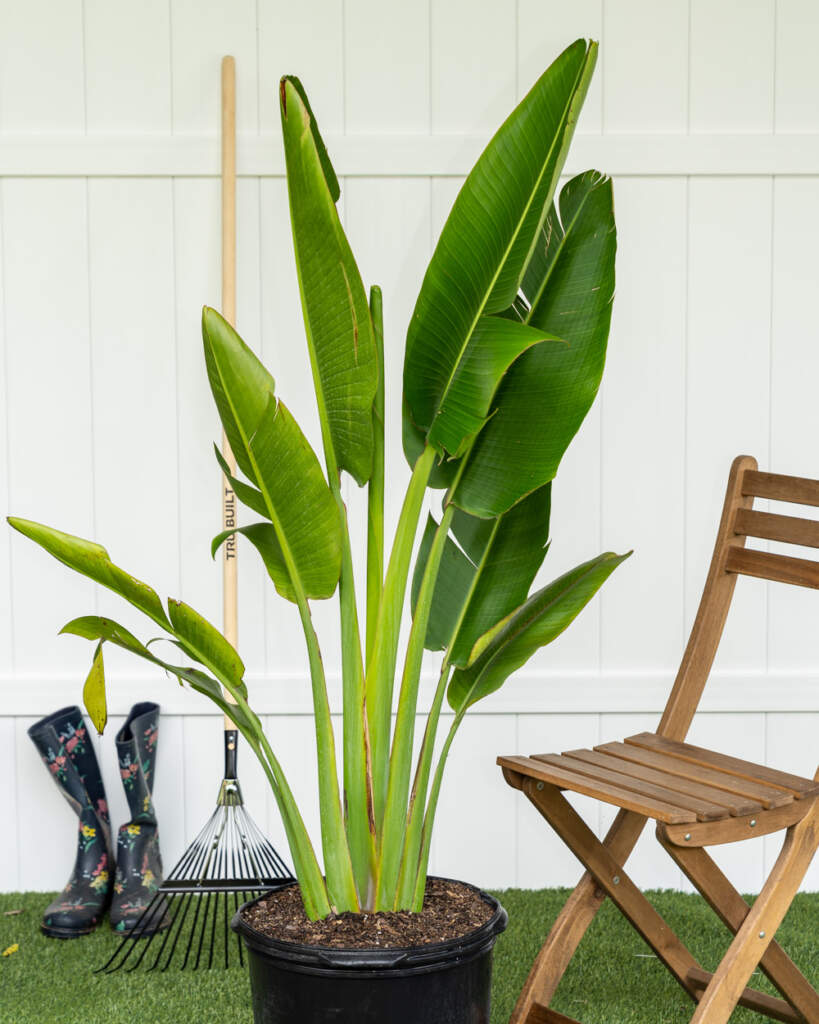
Traveler’s Palm
Traveler’s Palm (Ravenala madagascariensis)
The Traveler’s Palm, known scientifically as Ravenala madagascariensis, is an iconic symbol of Madagascar’s rich flora. Despite its common name, it is not a true palm but a member of the Strelitziaceae family, closely related to the bird-of-paradise plants. This striking plant is renowned for its unique, fan-like arrangement of leaves, which create a distinctive silhouette against the island’s landscape.
Originating from the lush, eastern rainforests of Madagascar, the Traveler’s Palm has adapted to the island’s tropical climate. Its name, ‘Traveler’s Palm,’ is steeped in lore. It is said that the plant’s orientation from east to west provided a natural compass to travelers. Additionally, the sheaths of the stems are known to hold rainwater, which could offer a refreshing drink to weary wanderers, further cementing its name.
Historically, the Traveler’s Palm has held a significant place in the culture and natural history of Madagascar. Its large, banana-like leaves have been utilized by locals for various purposes, including roofing and wrapping material. In the global context, the Traveler’s Palm has gained popularity in tropical and subtropical regions for ornamental purposes. Its dramatic appearance makes it a stunning focal point in gardens, symbolizing the exotic allure of the tropics.
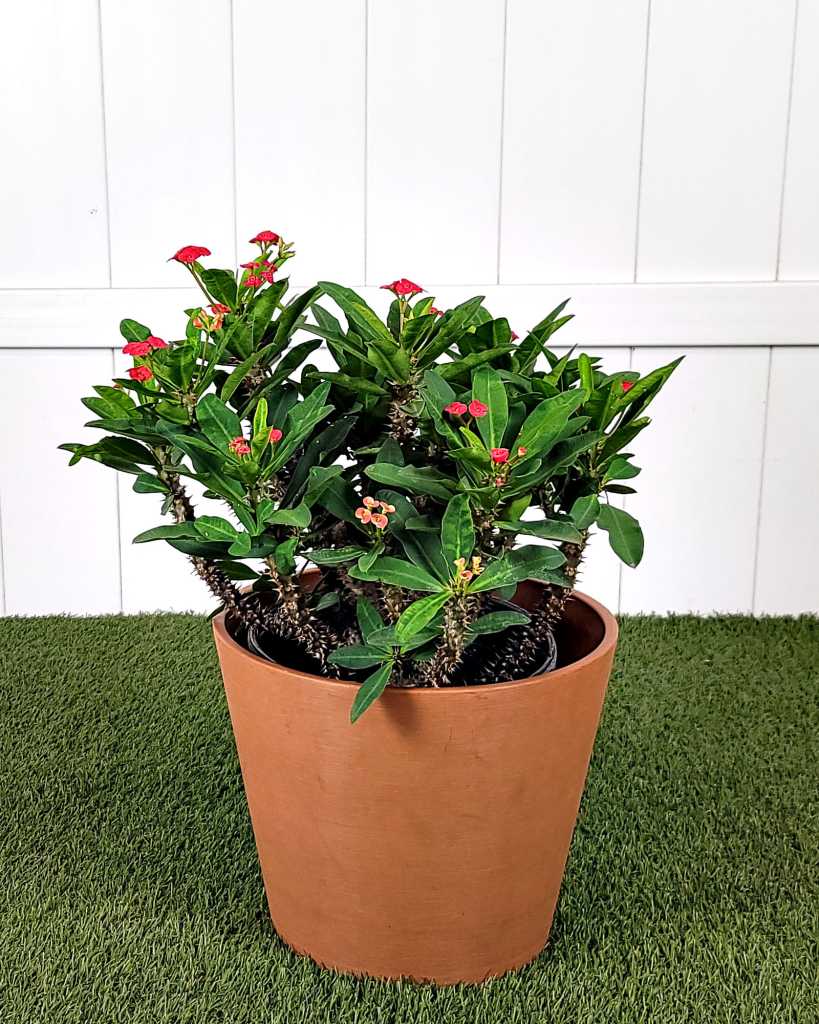
Crown of Thorns Bush
Crown of Thorns (Euphorbia milii)
The Crown of Thorns, scientifically known as Euphorbia milii, is a striking succulent plant native to the diverse and rugged landscapes of Madagascar. This plant, belonging to the Euphorbiaceae family, is renowned for its distinctive appearance, characterized by densely spined, woody stems and vibrant, small flowers that bloom almost year-round. The flowers, often mistaken for petals, are actually bracts that come in various colors, including pink, red, and yellow.
Originating from the hot and arid regions of Madagascar, the Crown of Thorns has evolved to withstand harsh, drought-prone environments. Its thick, spiny stems serve as an adaptation for water storage and deterrence against herbivores. The plant’s common name is steeped in Christian tradition, where it’s believed to be the species used for the crown of thorns placed on Jesus Christ’s head during his crucifixion. This association has led to its symbolic use in various cultural and religious contexts.
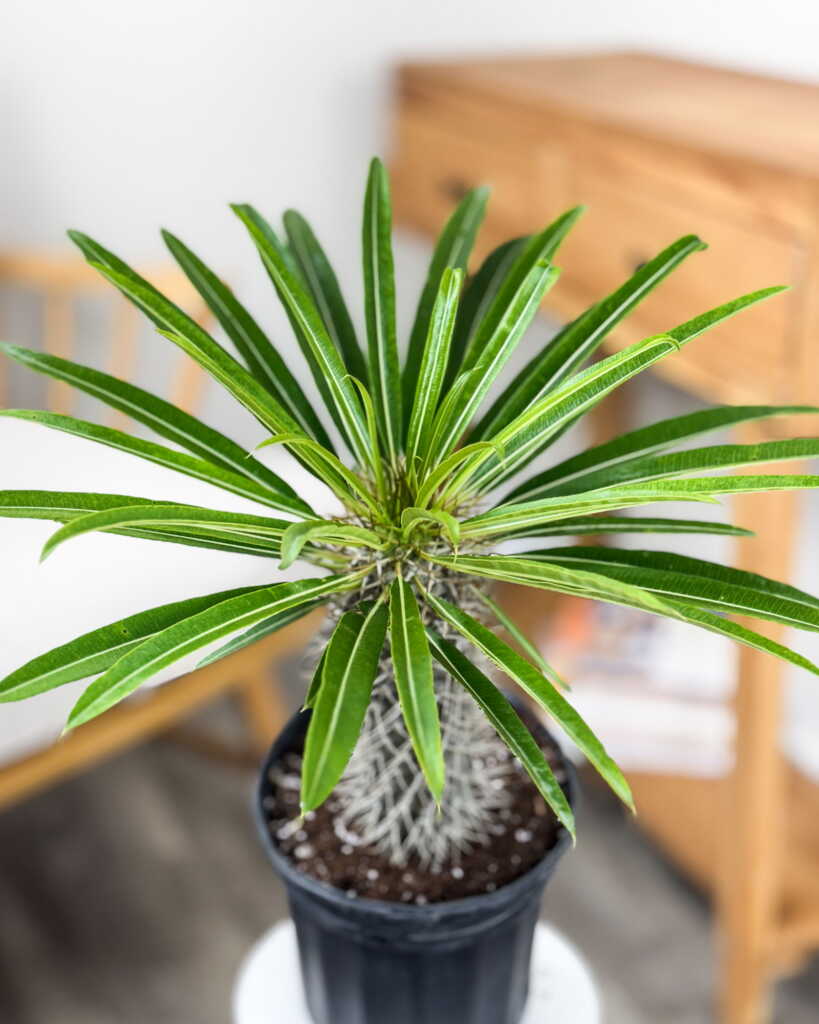
Madagascar Palm
Madagascar Palm (Pachypodium lamerei)
The Madagascar Palm, scientifically named Pachypodium lamerei, is an extraordinary plant that belies its name, as it is not a true palm but rather a member of the Apocynaceae family. This intriguing species is endemic to the arid, southern regions of Madagascar, a land celebrated for its unique and endemic flora. The Madagascar Palm has adapted remarkably well to the harsh, dry environments of its native habitat.
Characterized by its thick, spiny trunk and slender, lance-shaped leaves that cluster at the top, the Madagascar Palm presents a striking silhouette. The trunk, which serves as a water reservoir, allows the plant to endure long periods of drought. The spines, while giving the plant a formidable appearance, are a defense mechanism against herbivores.
Historically, the Madagascar Palm holds a special place in the natural landscape of Madagascar. It’s a symbol of the island’s diverse plant life and its ability to thrive under extreme conditions.
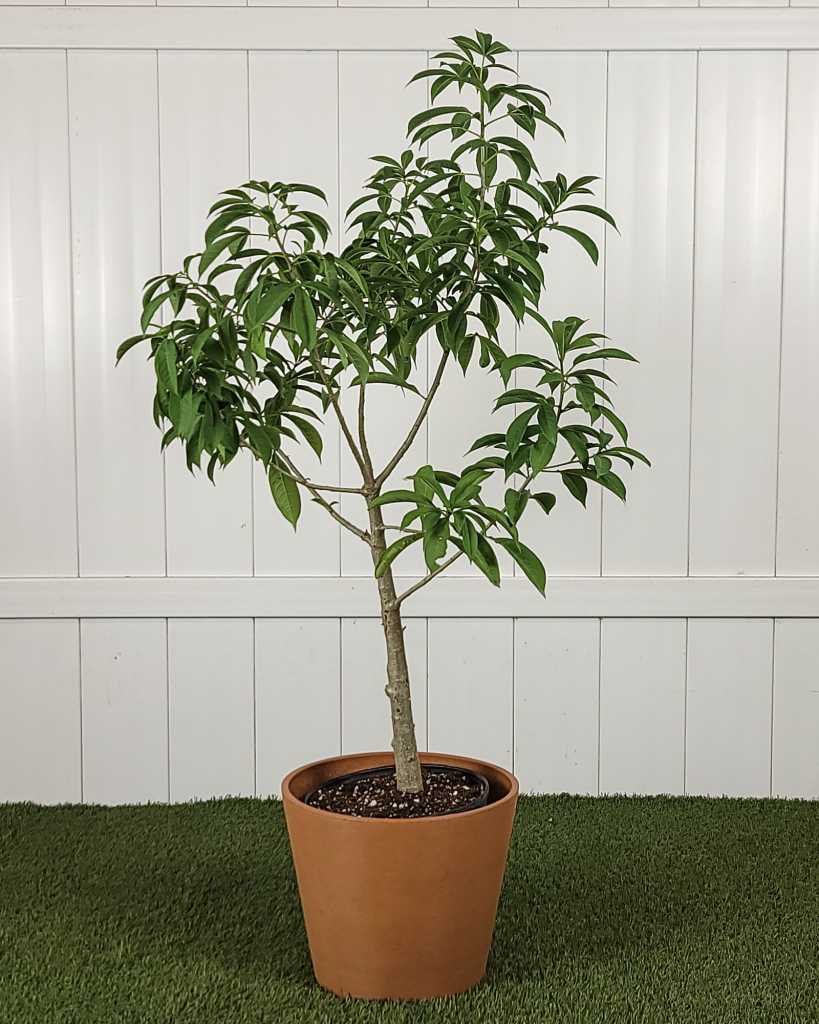
Baobab Tree
Baobab Tree (Adansonia spp.)
The Baobab Tree, belonging to the genus Adansonia, is one of the most iconic and awe-inspiring trees native to Madagascar. Often referred to as the “Tree of Life,” the baobab is renowned for its remarkable longevity and distinctive, massive trunk, which can store large amounts of water to endure the arid environments. This giant of the plant world is a quintessential symbol of the African and Madagascan landscapes, though its presence is also found in Australia and the Arabian Peninsula.
Madagascar, in particular, is home to six species of baobabs, each adapting uniquely to the island’s varied ecosystems. These trees can reach incredible ages, with some specimens believed to be over a thousand years old. Their longevity has made them a silent witness to generations of human history and a living testament to Madagascar’s ancient and diverse natural heritage.
Historically, baobabs have been deeply intertwined with the culture and daily life of the Malagasy people. Every part of the tree has a use: the bark for cloth and rope, the leaves for medicine and food, and the fruit, known as “monkey bread,” is edible and rich in nutrients. In local folklore, baobabs are often the subject of myths and legends, revered as sacred entities in many communities.
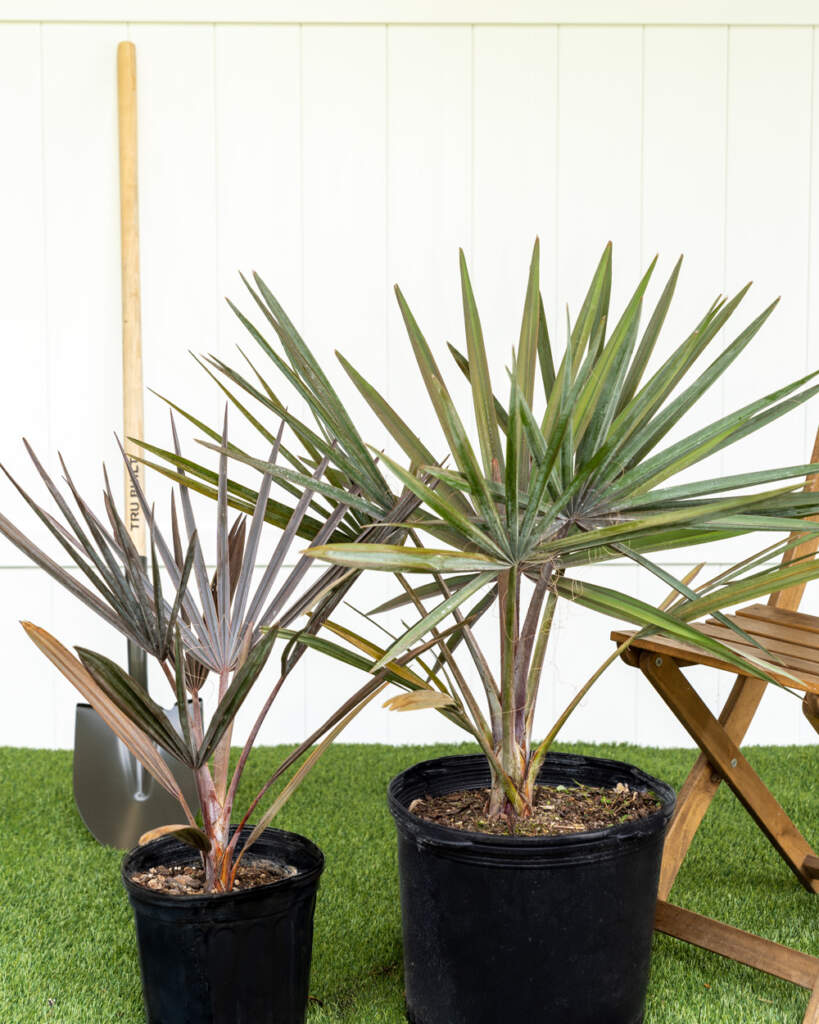
Bismarck Palm ‘Silver’
Bismarck Palm (Bismarckia nobilis)
The Bismarck Palm, scientifically known as Bismarckia nobilis, is a majestic and distinctive species native to the grasslands and savannas of Madagascar. Named in honor of the first chancellor of the German Empire, Otto von Bismarck, this palm is celebrated for its striking appearance and resilience. The Bismarck Palm is a notable example of Madagascar’s unique botanical diversity, offering a glimpse into the island’s rich and varied ecosystems.
Distinguished by its massive, solitary trunk and stunning silvery-blue to blue-green fronds, the Bismarck Palm can reach impressive heights, creating a commanding presence in any landscape. Its large, fan-shaped leaves are a defining characteristic, making it a popular choice for ornamental purposes in tropical and subtropical climates worldwide.
The Bismarck Palm’s history is deeply rooted in the ecology of Madagascar. Adapted to the dry, open environments of the island, it has evolved to withstand periods of drought, exemplifying the adaptive traits of Madagascar’s endemic flora. In its native setting, the palm plays a crucial role in the local ecosystem, providing habitat and food for various wildlife species.
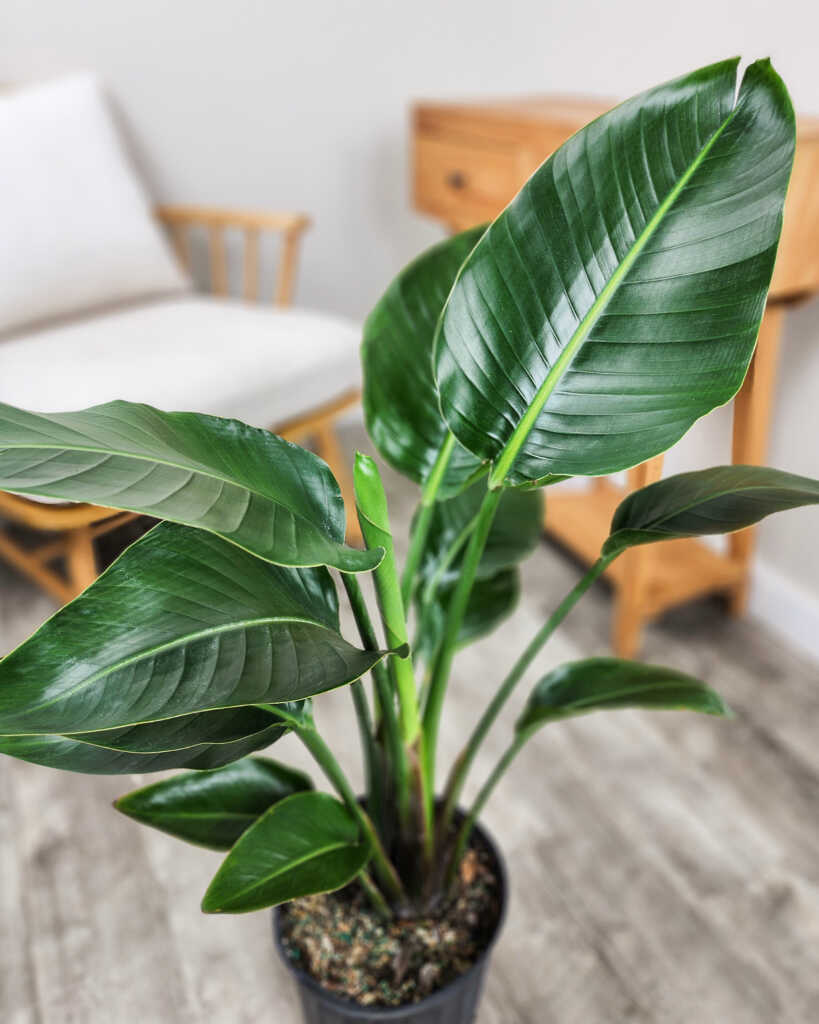
White Bird of Paradise
9. White Bird of Paradise (Strelitzia nicolai)
While not originally from Madagascar, the White Bird of Paradise has become synonymous with tropical and subtropical gardens worldwide, including those in Madagascar. Its tall, upright stems and broad leaves create a dramatic, jungle-like feel, making it a popular choice for adding an exotic touch to landscapes and indoor spaces.
Historically, the White Bird of Paradise has been a symbol of magnificence and beauty in various cultures. The plant’s remarkable flowers, which can reach up to 18 cm in size, emerge from purplish-blue bracts, adding a splash of vibrant color and architectural interest wherever they are grown.
Conclusion
Madagascar’s flora is not just a display of nature’s creativity but also a testament to the resilience and adaptability of life. Each of these plants tells a story of survival and beauty, making them not just botanical specimens but cultural icons. Incorporating these plants into your living space can bring a piece of Madagascar’s unique environment into your home, reminding us of the vast diversity and wonder of our natural world.
Click here to learn more about different plant species from Around the World.


